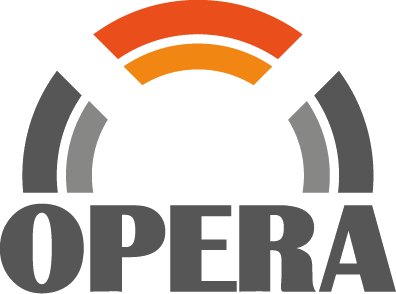


OPERA was carried out in Italy twice: in 2017 and more recently in 2023. Both surveys are reported below.
June – December 2023
Adults with successful completion of osteopathic training programme and practising as an osteopath. Any type of training leading to a Diploma in Osteopathy (DO) or equivalent was considered acceptable for inclusion.
Italian Register of Osteopaths (Registro degli osteopati d’italia - https://www.registro-osteopati-italia.com/)
February – June 2017
Adults with successful completion of osteopathic training programme and practising as an osteopath. Any type of training leading to a Diploma in Osteopathy (DO) or equivalent was considered acceptable for inclusion.
OPERA-IT group: the OPERA-IT group is composed by: Marcello Luca Marasco (ABEos), Alberto Maggiani (AIMO), Antonio Cavallaro (AISERCO), Dario Silvestri (ASOMI), Joseph Zurlo and Marco Petracca (CERDO), Mauro Fornari (CIO), Veronica Bersan (CSDOI), Giacomo Lo Voi (CSOT), Liria Papa (ICOM), Sandro Tamagnini (ICOMM), Roberta Filipazzi (IEMO), Tatiana Stirpe (Meta Osteopatia), Saverio Colonna (OSCE), Alessandro Gavazzi (SOFI), Andrea Manzotti and Andrea Bergna (SOMA), Sbarbaro Marco (SSOI), Federico Franscini (APO), Guglielmo Donnaquio (Osteopatia per Bambini), Alessandro Parisi (SIOS), Massimo Valente (Tuttosteopatia), Emanuele Botti (Advanced Osteopathy), osteopatiriconosciuti.
Italian Register of Osteopaths (Registro degli osteopati d’italia - https://www.registro-osteopati-italia.com/)
A voluntary, online based, closed-ended survey was distributed across Italy in the period between February and June 2017. An e-based campaign was set up to reach the Italian osteopathic professionals. Participants were asked to complete the forms by filling in the information regarding the demographics, working status and professional activities, education, consultation fees, patient complaints, treatment and management. The survey was completed by 4816 individuals. 196 people started the survey but did not finish, which corresponds to a 4% attrition rate. The majority of respondents were males (66.7%). The modal age group was 30–39 (40.0%). 73.8% of respondents had a previous academic degree, mainly in the fields of sports science (36.4%) and physiotherapy (25.3%). 25.6% declared not to have a previous academic degree. The majority of respondents declared to work alone (58.4%), while the remaining declared to work in association with other professionals. The osteopaths /citizens ratio was 8.0 osteopaths/100,000 citizens. The profile of osteopaths in Italy seems to be characterised by a self-employed young adult male working mostly as a sole practitioner, who has been trained as osteopath through a part-time curriculum and had a previous degree mostly in the fields of sports science or physiotherapy. These results provide important insights into the osteopathic profession in Italy. The varied professional educational backgrounds need to be considered with regard to the implementation of a professional licensing process and future pre-registration education in the country. The number of respondents is an estimate of the actual number of Italian osteopaths. Only the completion of the regulatory process and the creation of the mandatory official register will allow to know the number of Italy based osteopaths.
Cerritelli F, van Dun PLS, Esteves JE, Consorti G, Sciomachen P, Lacorte E, et al. (2019) The Italian Osteopathic Practitioners Estimates and RAtes (OPERA) study: A cross sectional survey. PLoS ONE 14(1): e0211353. https://doi.org/ 10.1371/journal.pone.0211353
3rd National conference of Italian register of osteopath (Rome: 26-05-17)
QUANTUM-IT (Florence: 08-07-17)
